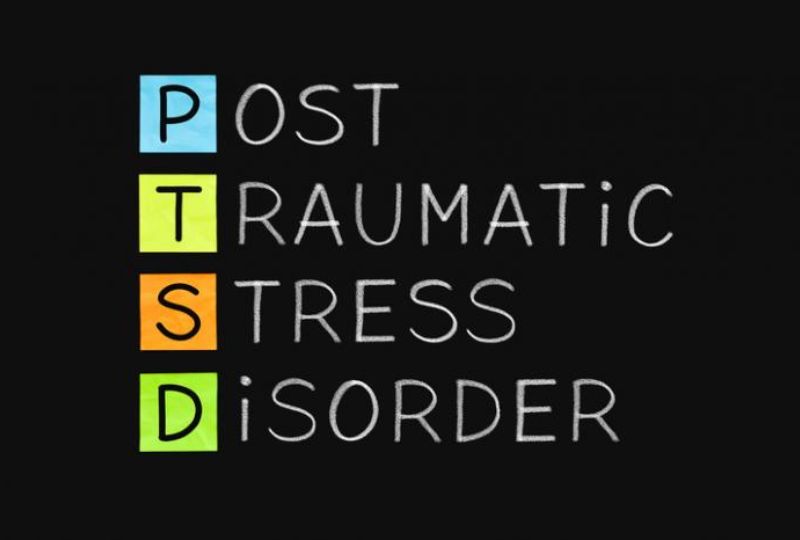Many of us experience trauma during our lifetime, some time we easily cope-up without getting negatively affected by the traumatic event. But for many of us, those experiences can linger on, and may cause symptoms like flashbacks, nightmares and negative and uncontrollable thoughts about the event which may lead to severe anxiety and that interferes with everyday life. This phenomenon is called post-traumatic stress disorder of PTSD.
Psychological trauma can result from witnessing an event that is perceived to be life-threatening or to pose the potential of serious physical injury to self or others i.e. Sudden death of loved one, domestic violence, injury or illness, physical, emotional or sexual abuse, war, accidents and natural disasters.
It is natural to feel afraid during and after a traumatic situation. Fear triggers many reactions and changes in the body (biological-neurological changes) to help and protect against the danger or to avoid it. Such experiences, which are often accompanied by intense fear, horror, and helplessness, can lead to the development of post traumatic stress disorder (PTSD).
Nearly most of us experience a range of reactions after trauma, yet most people easily or with time recover from initial symptoms naturally. Those who continue to experience problems may be diagnosed with PTSD.
“People who have PTSD may feel stressed or frightened even when they are not in danger.”
Signs and Symptoms
PTSD symptoms usually begin early, within 3 months of the traumatic incident, but sometimes they begin years afterward the incident happened. To diagnose with PTSD; Symptoms must last for more than a month and be severe enough to interfere with relationships or work.
PTSD symptoms are generally grouped into four types: intrusive memories, avoidance, negative changes in thinking and mood, and changes in physical and emotional reactions. Symptoms can vary over time or vary from individual to individual.
The course of the illness also varies. Some people recover within 6 months, while others have symptoms that last much longer. In some people, the condition becomes chronic.
To be diagnosed with PTSD, an individual must have all of the following symptoms for at least 1 month.
- Intrusive memory and re-experiencing symptom
- Avoidance symptom
- Cognition and mood symptoms
- Arousal and reactivity symptoms
1. Intrusive memories and re-experiencing symptoms
Re-experiencing symptoms may cause problems in individual’s subjective emotional experience and everyday life routine as well. The symptoms can start from individuals own thoughts and feelings. Words, objects, or situations that are reminders of the event can also trigger the re-experiencing symptoms.
Symptoms of intrusive memories are…
- Recurrent, unwanted distressing memories of the traumatic event
- Experiencing the traumatic event as if it were happening again (flashbacks), experiencing the trauma over and over including physical symptoms like a racing heart or sweating, extreme anxiety, restlessness and helplessness.
- Upsetting dreams or nightmares about the traumatic event.
- Severe emotional distress or physical reactions to something that reminds of the traumatic event
- Frightening thoughts
2. Avoidance behaviour
Things that reminds a person of the traumatic event can trigger avoidance behavior. These symptoms may cause a person to change his or her personal routine. For example, after a bad car accident, a person who usually drives may avoid driving or riding in a car.
Symptoms of avoidance are…
- Trying to avoid thinking or talking about the traumatic event
- Avoiding thoughts or feelings related to the traumatic event.
- Avoiding places, activities or people that remind you of the traumatic event
- Staying away from places, events, or objects that are reminders of the traumatic experience
3. Negative changes in thinking and mood (Cognitive and mood symptoms)
In this stage of PTSD individual’s cognition and mood symptoms can begin or worsen after the traumatic event. These symptoms can make the person feel alienated or detached from friends or family members.
For some of us it is natural to have some of these symptoms for a few weeks after a dangerous event. When the symptoms last more than a month, seriously affect one’s ability to function, and are not due to substance use, medical illness, or anything except the event itself, they might be PTSD.
Negative changes in thinking and mood symptoms are…
- Negative thoughts about yourself, other people or the world
- Hopelessness about the future
- Memory problems, including not remembering important aspects of the traumatic event
- Difficulty maintaining close relationships
- Feeling detached from family and friends
- Lack of interest in activities you once enjoyed
- Difficulty experiencing positive emotions
- Feeling emotionally numb
- Distorted feelings like guilt or blame
- Loss of interest in enjoyable activities
4. Changes in physical and emotional reactions (Arousal and reactivity symptoms)
Arousal symptoms are usually constant, instead of being triggered by things that remind one of the traumatic events. These symptoms can make the person feel stressed and angry. They may make it hard to do daily tasks, such as sleeping, eating, or concentrating.
Symptoms of changes in physical and emotional reactions (also called arousal symptoms) are…
- Being easily startled or frightened
- Always being on guard for danger
- Self-destructive behaviour, such as drinking too much or driving too fast
- Trouble sleeping
- Trouble concentrating
- Irritability, angry outbursts or aggressive behaviour
- Overwhelming guilt or shame
Intensity of symptoms and treatment required
PTSD symptoms can vary in intensity over time. Individual may have more PTSD symptoms when they are under stresses in general, or when they come across reminders of what he-she went through. For example, you may hear a car backfire and relive combat experiences. Or you may see a report on the news about a sexual assault and feel overcome by memories of your own assault.
Seek and Stick With Treatment
LA is providing Free* psychological assessment for screening of Post Traumatic Stress Disorder and offering personalized psychotherapy (CBT, Mindfulness and holistic approach of psychotherapy).
If you or someone you know is in immediate distress and need help, may contact us.
You are not alone. We are with you. LA is welcoming you to live again and get better version of you.
Your mental health care is our priority.
L@A



